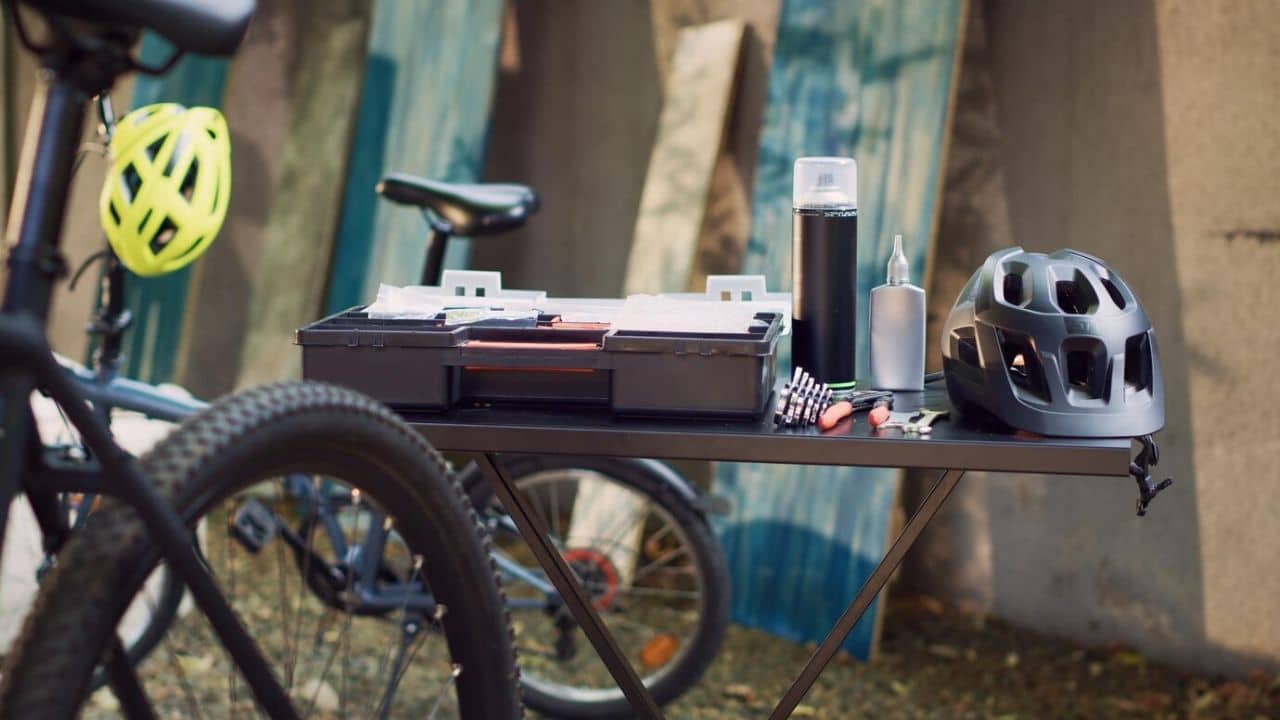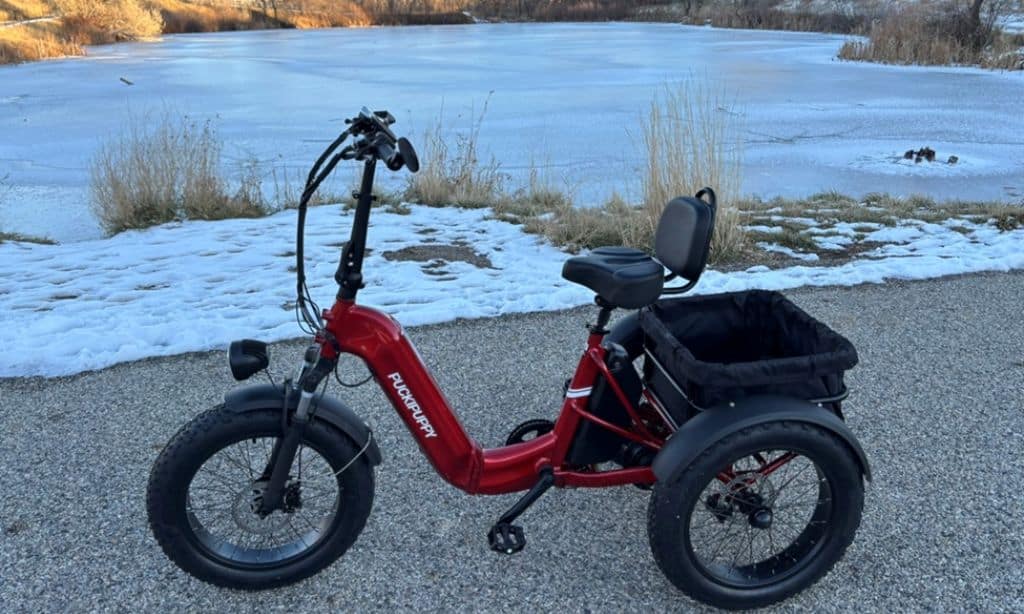As the weather turns colder, many riders pack away their bikes, but for the dedicated cyclist, winter biking is an opportunity to explore the season’s unique challenges. The right winter bike gear is crucial for ensuring your safety and comfort during your rides. In addition to warmth, you’ll need to consider factors like traction, visibility, and protection against the elements.
Winter biking can be tough on both the rider and the bike, with icy roads, slush, and cold temperatures posing unique risks. However, with the proper winter biking gear and fat tire ebikes, you can make these conditions manageable. This guide covers all the essentials you need to stay comfortable and safe while riding in winter conditions.
Choosing the Right Winter Bike Gear
When it comes to winter biking, not all gear is created equal. Different weather conditions, bike types, and riding needs (commuting, mountain biking, or using an ebike) will all influence your gear choices. Here’s a breakdown of the most important winter bike gear you need to consider:
1. Fat Tires: Better Traction for Ice and Snow
One of the most critical components for winter riding is fat tires. These tires are specially designed to handle rough and uneven surfaces, offering better grip and stability than regular tires
- Studded Tires: For the most extreme conditions, studded fat tires are your best option. The metal studs embedded in the tire provide superior traction on ice, preventing you from slipping on slippery surfaces.
- Wider Tires: For snowy conditions, wider tires with more surface area help prevent you from sinking into deep snow and provide a better grip on slushy ground.
- Tire Pressure: In colder weather, you’ll need to adjust your tire pressure. Lower tire pressure gives you better traction and helps the tire conform to uneven surfaces, reducing the risk of accidents.
Fat tires are designed to provide stability and improve your confidence when biking in winter. Whether you’re navigating icy roads or soft snow, these tires ensure you stay safe while riding your bike in winter conditions.
Among many ebike brands, Puckipuppy offers outstanding fat tire ebikes. Puckipuppy fat tire ebikes are a fantastic option for anyone looking to tackle winter riding with ease. These bikes are equipped with ultra-wide fat tires, designed to provide maximum stability and traction on icy or snowy terrain. The combination of their sturdy, durable frame and specially engineered fat tires makes them perfect for both beginners and experienced riders.
With Puckipuppy ebikes, you can enjoy smooth and safe rides through the toughest winter conditions, whether it’s gliding over icy paths or navigating through deep snow. Their robust tires offer excellent grip, reducing the likelihood of slipping while giving you the confidence to ride in even the harshest winter environments. If you’re looking for an e-bike that excels in winter conditions, Puckipuppy fat tire ebikes are the ultimate choice.
2. Winter Bike Helmets for Enhanced Safety and Warmth
Your winter bike helmet is more than just a safety measure; it also helps you stay warm. When cycling in freezing temperatures, a regular helmet might not be enough to protect your head from the cold wind
- Insulation: Look for helmets designed with insulation, which provides extra warmth without sacrificing ventilation.
- Visors: A visor can help shield your eyes from snow, rain, and wind, especially if you’re commuting in the early morning or late afternoon when visibility can be poor.
- Fit and Coverage: Ensure your helmet fits snugly and covers your head and ears properly. Some helmets offer ear flaps or attachments to add warmth during particularly cold rides.
For ebike riders, helmets designed to handle higher speeds may be necessary, as they need to provide both comfort and protection at speeds that could be dangerous in icy conditions.
3. Winter Bike Gloves for Warmth and Grip
Cold hands are one of the most uncomfortable aspects of winter biking. A pair of winter bike gloves can make all the difference by keeping your hands warm and providing excellent grip on the handlebars.
- Insulated Gloves: Gloves with good insulation help retain heat, while still being flexible enough for handling the bike.
- Waterproofing: Wet hands can lead to numbness and poor grip. Look for waterproof winter bike gloves to keep your hands dry in snow or wet conditions.
- Heated Gloves: For riders in extreme cold climates, heated gloves are a great option to ensure your hands stay toasty, even during long rides.
Having bike winter gear that ensures both warmth and grip is essential for preventing accidents and ensuring you can control your bike with ease.
4. Winter Mountain Bike Shoes and Foot Protection
Winter mountain biking demands specific footwear to protect your feet from the cold, moisture, and slippery terrain. Regular shoes or sneakers won’t cut it in harsh winter conditions.
- Winter Mountain Bike Shoes: These shoes are designed to be waterproof and insulated, keeping your feet warm and dry even in snowy or wet conditions.
- Pedal Compatibility: Make sure your shoes are compatible with your pedals, especially if you’re using clipless pedals. Insulated shoes with rubber soles also provide extra grip.
- Waterproof Options: For both commuters and mountain bikers, waterproof options are a must to ensure your feet stay dry, even if you’re riding through slush or puddles.
When it comes to winter bike commuting gear, the right shoes will keep you comfortable and functional, even during long rides.
5. Layering for Comfort: Winter Bike Clothing Essentials
Proper layering is key to staying warm and comfortable during winter rides. The idea is to trap heat close to your body while allowing sweat to escape. Here’s a breakdown of essential clothing layers:
- Base Layers: Start with moisture-wicking materials such as merino wool or synthetic fabrics. These help to keep sweat off your skin, preventing chills.
- Mid-Layers: Insulating layers like fleece or down will trap heat and maintain body warmth.
- Outer Shell: A waterproof and windproof jacket is essential for blocking the elements, particularly when commuting in snowy or windy conditions.
Having the right layers of clothing will allow you to adjust your warmth and comfort, ensuring you’re never too hot or too cold on your ride.
6. Visibility and Lighting: Staying Safe in Low-Light Conditions
With shorter days and often cloudy weather, good lighting and visibility gear are essential for winter biking. Here are some tips for ensuring you’re visible during winter rides:
- Reflective Gear: Make sure your jacket, helmet, and other accessories feature reflective material. This will make you more visible to drivers, especially during the early morning or late evening.
- Headlights and Taillights: A reliable front headlight is essential for seeing ahead, while a rear taillight makes sure you’re visible from behind. Make sure your lights are bright enough to penetrate fog or snow.
7. Face and Neck Protection for Extreme Cold
Riding in frigid temperatures can leave your face and neck vulnerable to frostbite. Protect yourself with face masks, balaclavas, or neck gaiters.
- Balaclavas: These provide full coverage for your head, neck, and face, keeping out cold air and snow.
- Neck Gaiters: A good neck gaiter can be worn under your helmet to protect your neck from the cold and wind.
8. Winter Bike Commuting Gear for Daily Riders
For winter bike commuting, you’ll need additional gear to ensure your ride is comfortable and efficient in urban environments.
- Weatherproof Panniers: Keep your belongings dry and safe with waterproof panniers or backpacks.
- Mudguards: Mudguards protect you and your bike from slush, snow, and road debris.
- Hand Warmers: Keep your hands warm during longer rides with reusable hand warmers.
9. Ebike Safety Gear for Winter
Riding an ebike in winter requires specific safety gear to ensure that you can handle the added weight and speed.
- Reinforced Helmets: Look for a helmet that can handle higher speeds while offering protection in icy conditions.
- Additional Lighting: Since ebikes are faster, additional lighting is essential for winter visibility.
- Robust Tires: Invest in winter ebike tires that can handle snow, slush, and icy roads.
In addition to winter-specific gear, Puckipuppy offers a variety of other essential accessories that can enhance your riding experience year-round. For example, their rear racks provide extra storage space for carrying gear or groceries, while the bike hitch rack makes it easy to transport your ebike by car. To protect your bike from theft, bike alarms are an excellent security solution, alerting you to any unauthorized tampering with your bike.
These accessories, combined with the winter safety gear, make Puckipuppy ebikes a versatile choice for all-season riding, ensuring you’re fully prepared, no matter the conditions.
Practical Tips for Winter Bike Riding
Winter biking requires careful planning to ensure safety. Some practical tips include:
- Adjust Speed: Cold weather can make roads slick, so reduce your speed and give yourself more time to stop.
- Braking Techniques: Apply brakes gently to avoid sliding. Remember, snow and ice can make braking less effective.
For winter ebike riders, ensure you maintain the battery life by charging it in warmer environments and storing it in temperatures above freezing.
Conclusion
Investing in the right winter bike gear is essential to make your winter rides enjoyable, safe, and comfortable. Whether you’re cycling through snow-covered streets on your ebike or tackling winter mountain trails, proper gear will help you stay warm, dry, and in control.
Puckipuppy fat tire ebikes are ideal for winter riding, with wide, durable tires that provide excellent stability and traction on icy roads and deep snow. Whether facing winter’s toughest challenges or preparing for summer, Puckipuppy has you covered.





































